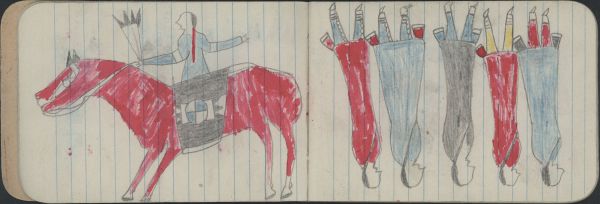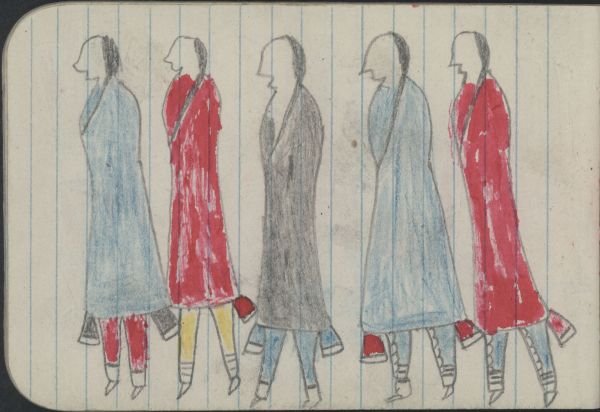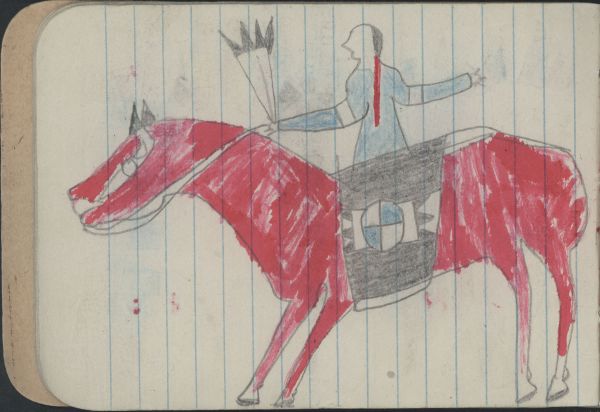COURTING, MAN: Man Dressed for Courting on Red Horse; GROUP, 5 WOMEN Wear 2 Red, 2 Blue 1 Gray Blankets
Ethnographic Notes
12 A lone man on a red horse is dressed for courtship. He wears a blanket (around his middle) decorated with a medicine-wheel beaded strip (joining two lengths of Stroud cloth) on it, typical of Lakota courting blankets. See William K. Powers ("The Art of Courtship among the Oglala," American Indian Art (Spring 1980): 40-47) for details of this blanket design. He wears a blue shirt accented by nickel-silver armbands, and he holds a fan of four immature golden eagle feathers. The man's hair is wrapped in red cloth. The horse has a German silver or silver headstall, (Kahn, 2003: 72, 81). Such headstalls were worth about $100 in 1879, or almost $2000 today (Kahn, 2003: 81). Although a woman is not in the scene, the man appears ready for a formal occasion such as courting, and the courting blanket design supports this interpretation. Candace Greene writes about the courting context suggested by regalia and other contexts: "[Some pictures] imply courting activity, such as a man wearing his blanket pulled over his head to conceal his identity while he waits for a woman . . . . " (1996 :29). She goes on to indicate the right-to-left directionality of pictures is the "critical organizing factor." Several other plates show a man prepared for courtship, not hunting or war, as indicating by his dress, such as the next page (plate 9). See plate 1 for further discussion of courtship conventions. 13, reversed. Five women stand in a row in solid-colored blankets of trade cloth: two red, two blue, and one gray. One wears buckskin leggings colored yellow; three wear blue trade cloth leggings with rows of small German silver buttons or conchos running vertically up the center; one wears solid red with undyed cuff around the ankles. None wears facepaint, and all have one braid laying down their visible shoulders. The first, second, and fourth women have four bands around each ankle.


